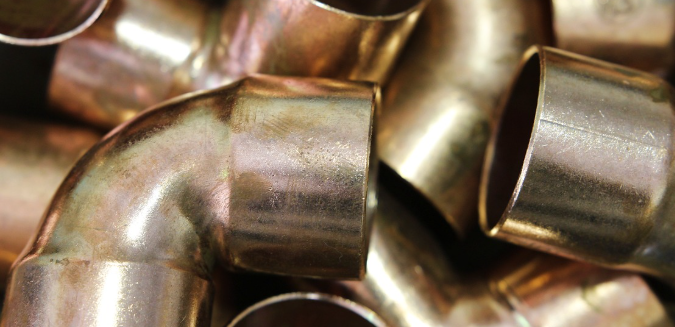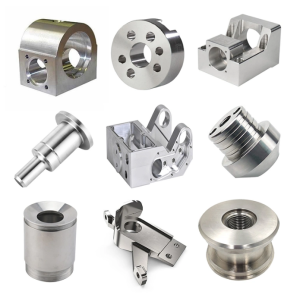Copper is a highly versatile metal that has been essential to various industries for centuries. Its remarkable properties—such as excellent electrical and thermal conductivity, corrosion resistance, and malleability—make it a popular choice for a wide range of applications. This article delves into the properties, types, manufacturing processes, and diverse applications of copper, highlighting why it remains indispensable in modern manufacturing.

What is Copper?
Copper is a chemical element with the symbol Cu (from cuprum, the Latin word for copper) and atomic number 29. This reddish-brown metal is known for its excellent electrical and thermal conductivity, corrosion resistance, and malleability. It can be found in nature in its metallic form, unlike most metals that need to be extracted from ores. Copper’s unique combination of properties makes it ideal for both industrial and aesthetic uses.
Copper has been used for thousands of years, with the earliest known copper artifact dating back to around 8,700 BC. Ancient civilizations, such as the Mesopotamians, recognized copper’s value and used it to create tools, weapons, and decorative items. Over time, copper has become an essential material in various sectors, from electronics to construction.
Copper Properties Table
| Property | Pure Copper | Brass | Bronze |
|---|---|---|---|
| Composition | 99.9% Copper | 60% Copper, 39% Zinc | 88% Copper, 12% Tin |
| Electrical Conductivity | Excellent | Good | Moderate |
| Thermal Conductivity | High (401 W/m·K) | Moderate (144 W/m·K) | Moderate (189 W/m·K) |
| Corrosion Resistance | High | Moderate | Very High |
| Common Uses | Electrical Components | Plumbing, Musical Instruments | Bearings, Ship Propellers |
This table summarizes the key properties of copper, brass, and bronze, highlighting their differences in conductivity, corrosion resistance, and typical applications.
What is Copper Made Of?
Pure copper consists entirely of copper atoms, making it a single-element metal. Its atomic number, 29, signifies that it has 29 protons in its nucleus. Copper is extracted from ores such as chalcopyrite (a copper sulfide) and malachite (a copper carbonate). These ores are found in various locations around the world, including North and South America, Russia, and Africa.
Copper Manufacturing Processes
The manufacturing of copper involves several key steps, each essential in transforming raw ores into the high-quality copper used in a variety of industries.
1. Mining:
Copper is typically extracted from open-pit mines, where large amounts of ore are blasted into smaller pieces for processing.
2. Extraction:
There are two primary methods of extraction:
- Hydrometallurgical Process for copper oxide ores, where the ore is treated with a leaching solution to extract the copper.
- Pyrometallurgical Process for copper sulfide ores, which involves heating the ore to separate the metal from other materials.
3. Purification:
The extracted copper is purified through either electrowinning (for oxide ores) or electrorefining (for sulfide ores) to achieve high purity.
4. Alloying:
Copper is often alloyed with other metals, such as zinc (for brass) or tin (for bronze), to improve its strength, corrosion resistance, and other properties. The alloying elements are melted and mixed with molten copper before being cast into the desired form.
Different Types of Copper
Copper can be found in various forms, depending on its purity and the presence of alloying elements. Each type of copper is best suited for specific applications.
1. Copper Wire
Copper wire is widely used for electrical wiring, taking advantage of copper’s exceptional electrical conductivity. It’s used for everything from household electrical systems to industrial power transmission.
2. Copper Tubing
Copper tubing is highly corrosion-resistant, making it ideal for use in plumbing systems for drinking water. Although more expensive than alternatives, its longevity and resistance to microbial growth make it a popular choice in many homes and buildings.
3. Copper Alloys
- Brass (copper and zinc) is commonly used for plumbing fixtures, musical instruments, and decorative items due to its strength and ease of machining.
- Bronze (copper and tin) is resistant to seawater corrosion, making it ideal for marine applications like bearings and propellers.
4. Pure Copper
Pure copper is used in precision electrical components, where its high electrical conductivity and low thermal expansion are beneficial.
5. Copper Nanoparticles
Copper nanoparticles are increasingly used in industries such as medicine and agriculture for their antimicrobial properties and high surface-area-to-volume ratio, which enhances their catalytic activity.
6. Free-Machining Coppers
These alloys are designed to be more machinable, making them suitable for applications like welding nozzles and soldering iron tips.
7. Oxygen-Free Copper
The purest form of copper, oxygen-free copper is used in high-performance electronics that require the best possible conductivity.
8. Electrolytic Copper
Electrolytic copper is highly purified and is typically used for critical electrical components such as bus bars and windings.
Physical Properties of Copper
Copper’s physical properties make it ideal for a variety of industrial applications. Below are some of the key physical characteristics:
| Copper Type | Density (g/cm³) | Melting Point (°C) | Boiling Point (°C) | Ductility | Thermal Conductivity (W/m·K) |
|---|---|---|---|---|---|
| High Purity Copper (>99%) | 8.96 | 1,083 | 2,595 | Very High | 401 |
| Free-Machining Copper | 8.94 | 1,080 | n/a | High | 377 |
| Brass | 8.73 | 930 | 1,100 | Moderate | 144 |
| Bronze | 8.8 | 910 | 2,300 | Moderate | 189 |
These properties influence the types of applications copper is best suited for, such as electrical components, heat exchangers, and plumbing.
Copper Applications
Copper is widely used in various industries due to its unique combination of properties. Below are some of its most common applications:
| Industry | Applications |
|---|---|
| Electronics | Wiring, Circuit Boards, Electrical Connectors |
| Architecture | Roofing, Wall Cladding, Gutters, Decorative Features |
| Plumbing | Water Supply Pipes, Faucets, Boilers |
| Transportation | Electric Vehicle Motors, Wiring for Automobiles, Hybrid and EV Batteries |
| Renewable Energy | Solar Panels, Wind Turbines, Power Cables |
| Medical Equipment | Antimicrobial Surfaces, Medical Instruments, Surgical Tools |
| Industrial Machinery | Heat Exchangers, Refrigeration Systems, Chemical-Resistant Components |
Benefits of Copper
- Electrical Conductivity: Copper is one of the best conductors of electricity, second only to silver.
- Thermal Conductivity: Its high thermal conductivity makes it ideal for heat exchangers and other cooling systems.
- Corrosion Resistance: Copper is highly resistant to corrosion, especially in water and seawater environments, making it an excellent choice for plumbing systems.
- Antimicrobial Properties: Copper’s ability to kill bacteria and prevent microbial growth makes it useful in medical equipment and water conveyance.
- Malleability and Ductility: Copper is easy to work with, making it suitable for a wide range of applications, from wiring to plumbing.
Limitations of Copper
- Cost: Copper is more expensive than materials like aluminum and plastic, which may limit its use in some applications.
- Weight: Copper is heavier than aluminum, making it less ideal for large-scale electrical transmission where weight is a concern.
- Oxidation: Copper can oxidize over time, which may reduce its lifespan in some applications.
- Toxicity: In large quantities, copper can be toxic, so it’s unsuitable for certain uses, such as in utensils that could come into contact with food.
FAQs About Copper
- Does Copper Rust Easily?
Copper does not rust, but it can oxidize, forming a greenish patina that protects the metal underneath. - What Type of Metal is Copper?
Copper is a pure metal with high electrical and thermal conductivity. - What is the Difference Between Copper and Aluminum?
Copper has superior electrical and thermal conductivity compared to aluminum but is heavier and more expensive. - What is the Difference Between Copper and Brass?
Brass is an alloy of copper and zinc, known for its higher strength and corrosion resistance compared to pure copper.
Copper’s unique properties, types, and applications make it one of the most valuable and versatile metals in manufacturing. Whether in electronics, construction, or renewable energy, copper continues to be an essential material for modern industries.


